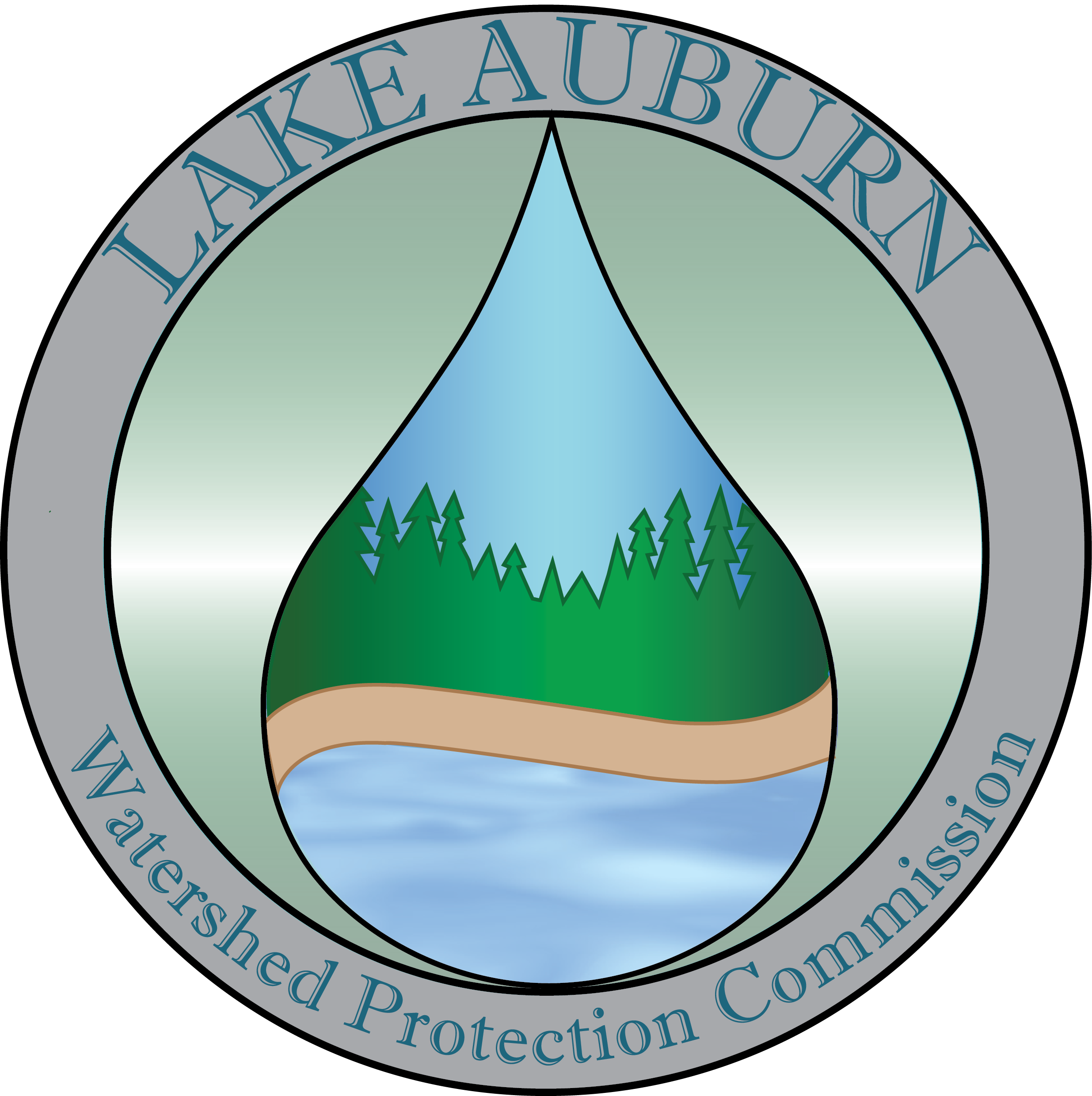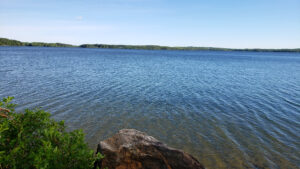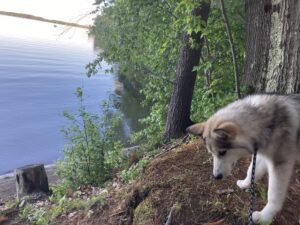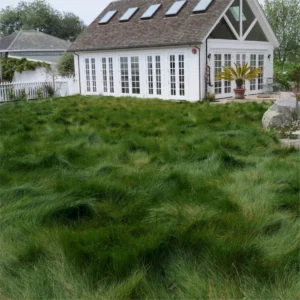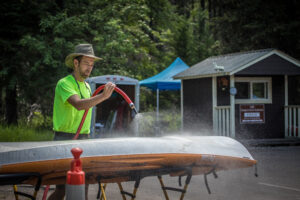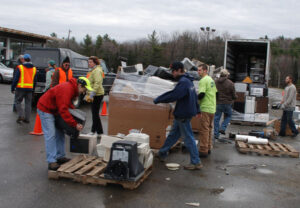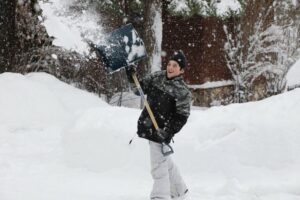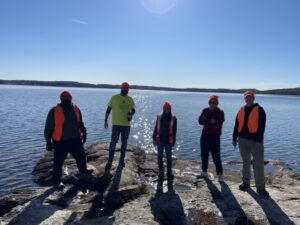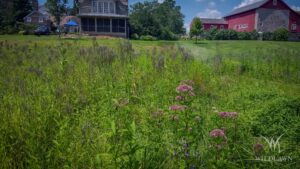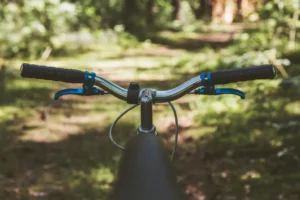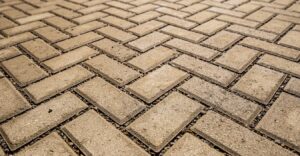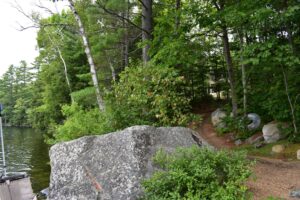Lake Auburn; Liz Allen
Although Earth’s surface is covered by nearly 70% water, only about 0.5% of that water is available fresh water (The Bureau of Reclamation), and in the United States 40-50% of our freshwater sources are threatened (The Nature Conservancy)! Even less of the available surface water in the United States is clean enough to maintain a filtration waiver from the Environmental Protection Agency. Luckily, Lake Auburn ticks all those boxes. This also means that we must protect this rare and precious water source! Here’s what you can do to play a role:
Photo: Marianne Weiler, from AllTrails
Watch and Clean Up After Your Dog
-
- Lake Auburn is your drinking water source, and we don’t want pets or people swimming in the water! Please keep your dog on a leash when hiking on commission land and ensure that you bring some poop bags to clean up after your dog. Dog poop contains bacteria that we want to keep out of the lake!
Photo: Native Turfgrass (Festuca rubra) by Vickie Wallace
Plant native plants on your property.
-
- Native grasses, flowers, bushes, and trees are not weeds! Having a biodiverse ecosystem on your land will provide numerous benefits to your property and the watershed. In addition to being aesthetically pleasing, native plants provide better habitat and food for local wildlife and are better at filtering runoff and slowing than non-native and ornamental varieties. To learn more about native plants check out the Wild Seed Project, and Androscoggin Soil and Water Conservation District, or check out this guide on alternative lawns from the University of Connecticut.
Photo: National Parks employee cleans a kayak
CLEAN DRAIN DRY!
-
- Make sure that you aren’t carrying any unwanted hitchhikers with you on your boat. Practice responsible boat maintenance and ensure you CLEAN DRAIN DRY. You can learn more about proper maintenance here: https://stopaquatichitchhikers.org/prevention/
Photo: E-waste recycling day in Farmington, Maine
Properly dispose of waste.
-
- To keep harmful chemicals out of our soil and water, it is important to properly dispose of them. DO NOT pour chemicals down your drain or leave electronics outdoors! Find a recycling center near you! Check out this link for more information: https://www.ecomaine.org/what-can-be-recycled/special-waste-disposal/ or https://www.maine.gov/dep/waste/ewaste/index.html
Image taken from saltsmart.org
Salt Smarter!
-
- Now that winter is here, we all need to combat snow and ice, however salt can be carried by meltwater and runoff into our lake! Ensure that your salt spread is wide and sparse, because excess salt can pollute, and a little bit of salt can go a long way. Runoff from salting can lead to increased chloride levels in lakes, rivers, and streams (Rubin, et al. 2022). Check out these resources from Salt Smart: https://saltsmart.org/
Photo: LAWPC trail volunteers
Volunteer!
-
- Volunteering is one of the best ways to get involved in your community and take direct action in protecting Lake Auburn. The Lake Auburn Watershed Protection Commission offers many volunteer opportunities, and great ways to get involved such as:
- Trail maintenance days
- Invasive species remediation
- Stream cleanup’s
- Lakeshore litter clean up
- Volunteering is one of the best ways to get involved in your community and take direct action in protecting Lake Auburn. The Lake Auburn Watershed Protection Commission offers many volunteer opportunities, and great ways to get involved such as:
Photo: Rewilded lawn by WildLawn
Practice Low-Mow or No-Mow.
-
- Mowing your lawn less frequently and at a higher blade height increases capacity to slow and filter stormwater runoff. Low-mow and no-mow lawns require less work, time, and cost to maintain it. Additionally, they help prevent erosion, provide habitat for pollinators, and provide aesthetic appeal.
Photo: Markus Spiske via Pexels
Try biking or walking over driving!
-
- Driving is convenient; however, driving can impact watershed health, and the health of animals. Since we have developed a car dependent society, wide impermeable surfaces intersect through watersheds. When oil, gas, or other fluids leak from a car they can be washed into rivers, streams, ponds, and lakes. They can also leech into our ground water and contaminate our soil. Car tires also get a lot of ware and tare, and micro-rubber can wash into our water bodies as well. A great alternative to driving is biking and walking, when feasible. By replacing close trips with a jaunt or a bike ride the impact goes down significantly, especially in and around the watershed. Imagine taking a peaceful bike ride around Lake Auburn and taking in the views. Additionally, carpooling is a great option to get less cars on the road and minimize impact. Limiting driving provides cleaner water, cleaner air, a less noisy environment, and healthier soil.
Photo: Permeable Pavers
Consider permeable surfaces in your property.
-
- Instead of concrete or asphalt, consider using brick or stone, leaving space between so water can be absorbed into the ground. You may also consider gravel as well! Additionally, brick or stone make great patios, a wooden deck also allows water to drop below and absorb into the ground. This prevents stormwater runoff from picking up debris, unwanted nutrients from fertilizers, and other unwanted substances from entering the watershed.
Photo: Lakeshore landscaping example, from China Region Lakes Alliance
Lakeshore Landscaping
-
- If your home is on the lakeshore, or nearby consider lakeshore landscaping! Keeping a vegetative buffer on your property near the lakeshore has numerous benefits including:
- Improved water quality from absorption of nutrients common in runoff such as phosphorus and nitrogen.
- Recharging groundwater and limiting flooding.
- Filtering sediments and trapping pollutants to keep our drinking water clean.
- Protecting banks from erosion.
- Provide habitat to wildlife, and wildlife corridors.
- Defend against eutrophication.
- If your home is on the lakeshore, or nearby consider lakeshore landscaping! Keeping a vegetative buffer on your property near the lakeshore has numerous benefits including:
For more information on how LAWPC protects Lake Auburn, and what you can do to get involved follow us on Instagram, Facebook and subscribe to our newsletter to keep up to date.
